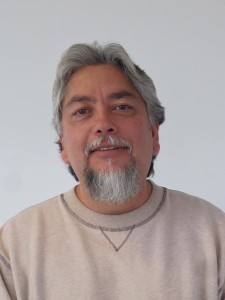Levi Romero

Professor
Bio
Courses
Un Trip Through New Mexico’s Literary Landscape and Beyond
This is a survey course of Chicano/a letters and the spoken word tradition in New Mexico and beyond. Beginning with the Discovery period, El Movimiento, and through the Contemporary, we will journey through a poetic odyssey that navigates through a diversity of poets, storytellers, singers/songwriters, and spoken word artists whose work honors the poetic tradition in a diversity of forms. In addition, we will explore a multiplicity of genres such as cuentos, corridos,inditas, and alabados as forms of ritual and cultural expression in the written and oral tradition. Literature, film, video, music and live recitals will inform our interdisciplinary study and analysis.
Acequia Landscapes: Water, Land, Community
With irrigation methodologies derived from Middle Eastern, Spanish, Mediterranean, and Indigenous peoples, these ancient community waterways known as acequias continue to function in the manner established in New Mexico by los nuevos pobladores (new settlers) more than 400 years ago. This class will examine the acequia cultural ecosystem and its unique traditions and practices. Students will learn about acequia terminology, concepts, laws, governance, and religious rituals vital to acequia communities.
New Mexico Villages and Cultural Landscapes
Before the age of strip malls, big-box supercenters, store-bought produce, and cyberspace social networks, New Mexicans gathered in plazas, grew their own vegetable gardens, and engaged in platicas to share stories and exchange knowledge and information. Our class will examine various cultural settings and traditions such as plazas, salas, resolanas, matanzas, acequia culture, and read from a collection of narratives that celebrate community and explore New Mexico’s cultural heritage from its not-so-easily-forgotten past through the present day.


